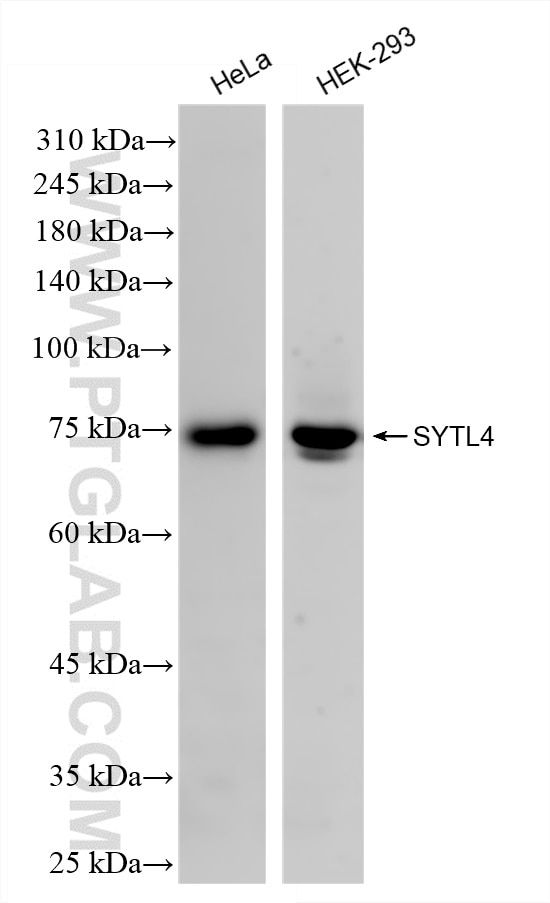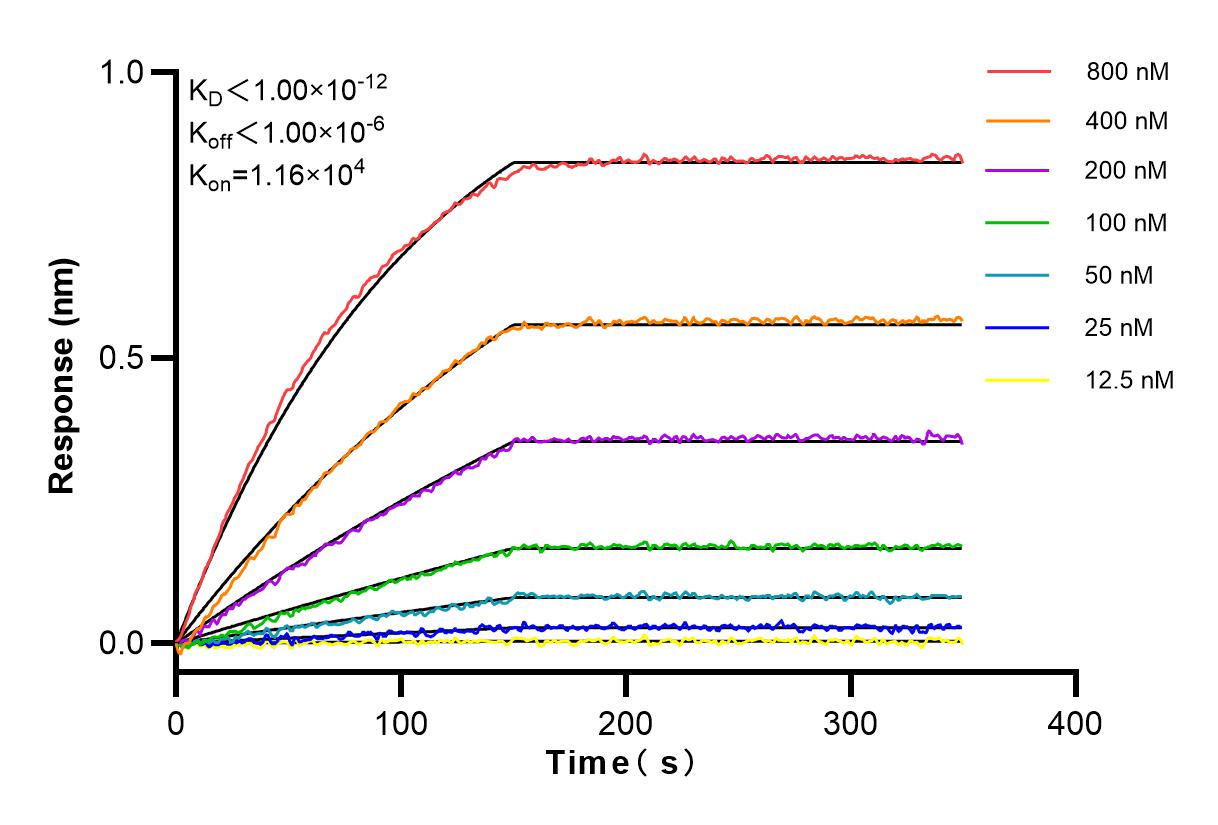SYTL4 Rekombinanter Antikörper
SYTL4 Rekombinant Antikörper für WB, ELISA
Wirt / Isotyp
Kaninchen / IgG
Getestete Reaktivität
human
Anwendung
WB, ELISA
Konjugation
Unkonjugiert
CloneNo.
240556E2
Kat-Nr. : 83564-5-RR
Synonyme
Geprüfte Anwendungen
| Erfolgreiche Detektion in WB | HeLa-Zellen, HEK-293-Zellen |
Empfohlene Verdünnung
| Anwendung | Verdünnung |
|---|---|
| Western Blot (WB) | WB : 1:500-1:3000 |
| It is recommended that this reagent should be titrated in each testing system to obtain optimal results. | |
| Sample-dependent, check data in validation data gallery | |
Produktinformation
83564-5-RR bindet in WB, ELISA SYTL4 und zeigt Reaktivität mit human
| Getestete Reaktivität | human |
| Wirt / Isotyp | Kaninchen / IgG |
| Klonalität | Rekombinant |
| Typ | Antikörper |
| Immunogen | SYTL4 fusion protein Ag2772 |
| Vollständiger Name | synaptotagmin-like 4 |
| Berechnetes Molekulargewicht | 671 aa, 76 kDa |
| Beobachtetes Molekulargewicht | 74-76 kDa |
| GenBank-Zugangsnummer | BC014913 |
| Gene symbol | SYTL4 |
| Gene ID (NCBI) | 94121 |
| Konjugation | Unkonjugiert |
| Form | Liquid |
| Reinigungsmethode | Protein A purfication |
| Lagerungspuffer | PBS with 0.02% sodium azide and 50% glycerol |
| Lagerungsbedingungen | Bei -20°C lagern. Nach dem Versand ein Jahr lang stabil Aliquotieren ist bei -20oC Lagerung nicht notwendig. 20ul Größen enthalten 0,1% BSA. |
Hintergrundinformationen
SYTL4, also known as SLP4 or granuphilin, is a member of the synaptotagmin-like protein (Slp) family. Members of this family are characterized by presence of an N-terminal Slp homology domain (SHD), which functions as a Rab27-binding domain, and C-terminal tandem C2 domains, putative Ca(2+)-binding motifs. SYTL4 is specifically expressed on dense-core granules in certain neuroendocrine cells and negatively controls dense-core vesicle exocytosis through specific interaction with Rab27A. (PMID: 16481396; 16473610)
Protokolle
| PRODUKTSPEZIFISCHE PROTOKOLLE | |
|---|---|
| WB protocol for SYTL4 antibody 83564-5-RR | Protokoll herunterladen |
| STANDARD-PROTOKOLLE | |
|---|---|
| Klicken Sie hier, um unsere Standardprotokolle anzuzeigen |




